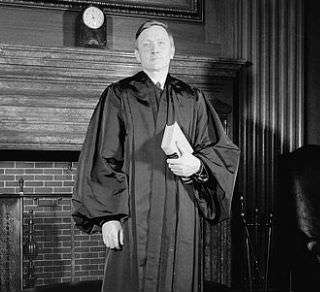Damon Root on How Liberals Learned to Stop Worrying and Love Judicial Activism

In 1935 the U.S. Supreme Court unanimously struck down the National Industrial Recovery Act, which was then the central legislative plank in President Franklin Roosevelt's New Deal. Just two years later, however, the Supreme Court famously switched course and began affirming the constitutionality of all other New Deal laws. Why did the Court change course? Because the justices embraced a sweeping doctrine of judicial deference towards the other branches of government. As one landmark 1938 ruling put it, "the existence of facts supporting the legislative judgment is to be presumed." In other words, the Supreme Court began tipping the scales in favor of government officials.
Yet at the same time that the Supreme Court was committing itself to this near-total submission to lawmakers on the economic front, the justices began testing the bounds of greater judicial action in other realms. In an excerpt from his new book Overruled: The Long War for Control of the U.S. Supreme Court, Senior Editor Damon Root explains how modern liberals came to abandon judicial deference in cases dealing with civil liberties, civil rights, privacy, and abortion.



Show Comments (0)